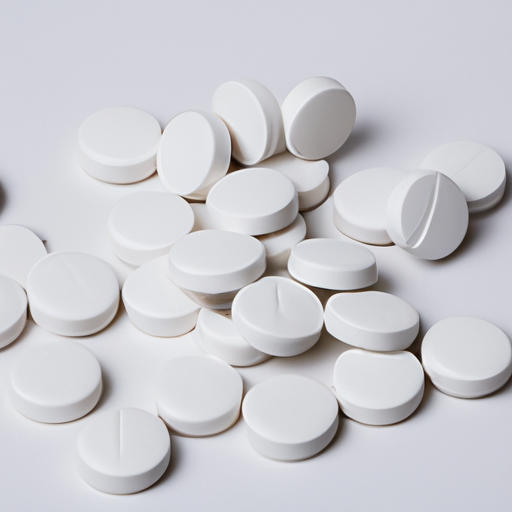Causes
Atopic dermatitis and urticaria, commonly referred to as hives, are both skin conditions that cause redness, itchiness, and irritation of the skin. Though both conditions are highly visible and extremely uncomfortable, the causes and treatments of each are largely different. Atopic dermatitis, or eczema, is a chronic inflammatory skin condition, often linked to allergies, asthma, and hay fever. While the exact cause of atopic dermatitis is unknown, it is thought to be related to genetic and environmental factors. Urticaria, on the other hand, is caused by an allergic reaction in response to a particular food or medication. It can also be due to an infection, or in some cases, a reaction to physical stimuli, such as cold or heat. In either case, treatment for each condition depends on the underlying cause, as well as the severity of the symptoms.
Symptoms
Atopic dermatitis and urticaria, or hives, are two skin conditions with similar symptoms, but they are caused by different things. Atopic dermatitis is a chronic skin condition, often caused by an allergic reaction or sensitivity to certain triggers, such as certain foods, pet dander, pollen, and dust mites. Symptoms of atopic dermatitis include patchy, itchy, red skin and may include small, raised bumps. Treatment for atopic dermatitis may include lifestyle changes, such as avoiding triggers, and topical medications, such as corticosteroids. Urticaria, or hives, are red and itchy bumps that appear on the skin. They are usually caused by an allergic reaction to something, such as a food, medicine, or insect sting. Symptoms can be mild or severe and usually last for several hours. Treatment for urticaria usually involves antihistamines and avoiding the trigger. Both atopic dermatitis and urticaria are common skin conditions, so it is important to speak with a healthcare professional to get a diagnosis and appropriate treatment.
Treatment
Atopic dermatitis and urticaria are two common skin conditions that require different types of treatment. They can be managed effectively if the right approach is taken.
When it comes to treatment, the first step is to identify the underlying cause of the problem. If the cause is identified, then treatment can be tailored to the individual’s needs. In many cases, topical creams, such as steroids and topical antihistamines, can be used to control the symptoms of atopic dermatitis and urticaria. Oral antihistamines may also be prescribed. In cases where the symptoms are severe, phototherapy or immunosuppressants may be recommended. Stress management and lifestyle changes are also important elements in managing these conditions.When it comes to treatment, here are the steps to follow:
- Identify the underlying cause of the condition
- Apply topical creams and/or take oral antihistamines
- Use phototherapy or immunosuppressants for severe cases
- Practice stress management and lifestyle changes
It is always best to consult with your doctor or dermatologist to determine the best approach to treating your condition. With the right treatment, atopic dermatitis and urticaria can be managed successfully.
Outlook
Atopic dermatitis and urticaria are two different skin conditions, with the former being an inflammatory skin disorder and the latter being an allergic reaction. Therefore, when it comes to the health outlook of these two conditions, they are quite distinct. In the case of atopic dermatitis, it is a chronic condition that can be managed but not cured. However, with proper treatment and lifestyle changes, symptoms can be reduced and flare-ups can be avoided. For urticaria, it is usually a short-term condition that can be effectively treated with antihistamines and topical remedies, removing the symptoms and restoring the skin. In both cases, it is important to work closely with a medical professional in order to create an effective treatment plan and to ensure that the condition is properly managed.
Difference between the two
Atopic dermatitis and urticaria are two distinct skin conditions with some similarities. Both of these conditions result in inflammation of the skin and are often accompanied by itching and redness. But the two conditions have different causes, treatments and long-term outlooks. Atopic dermatitis, also known as eczema, is a common chronic skin condition that is often hereditary. The condition is characterized by red, itchy patches on the skin, usually on the face, neck and limbs. The cause of atopic dermatitis is unknown, but it is thought to be linked to allergies, irritants, stress and genetics. Treatment for atopic dermatitis often includes anti-inflammatory medications, topical creams and lifestyle changes.Urticaria, also known as hives, is a skin reaction caused by an allergic reaction. It is characterized by raised, red bumps on the skin that can appear anywhere on the body. Unlike atopic dermatitis, urticaria can be caused by a variety of triggers, including foods, medications or insect bites. Treatment of urticaria may include antihistamines and other medications.Both atopic dermatitis and urticaria can cause uncomfortable symptoms and can affect one’s quality of life. It is important to speak to a healthcare provider if you think you may have either of these conditions. With proper diagnosis and treatment, the symptoms of both atopic dermatitis and urticaria can be managed.





No Comments